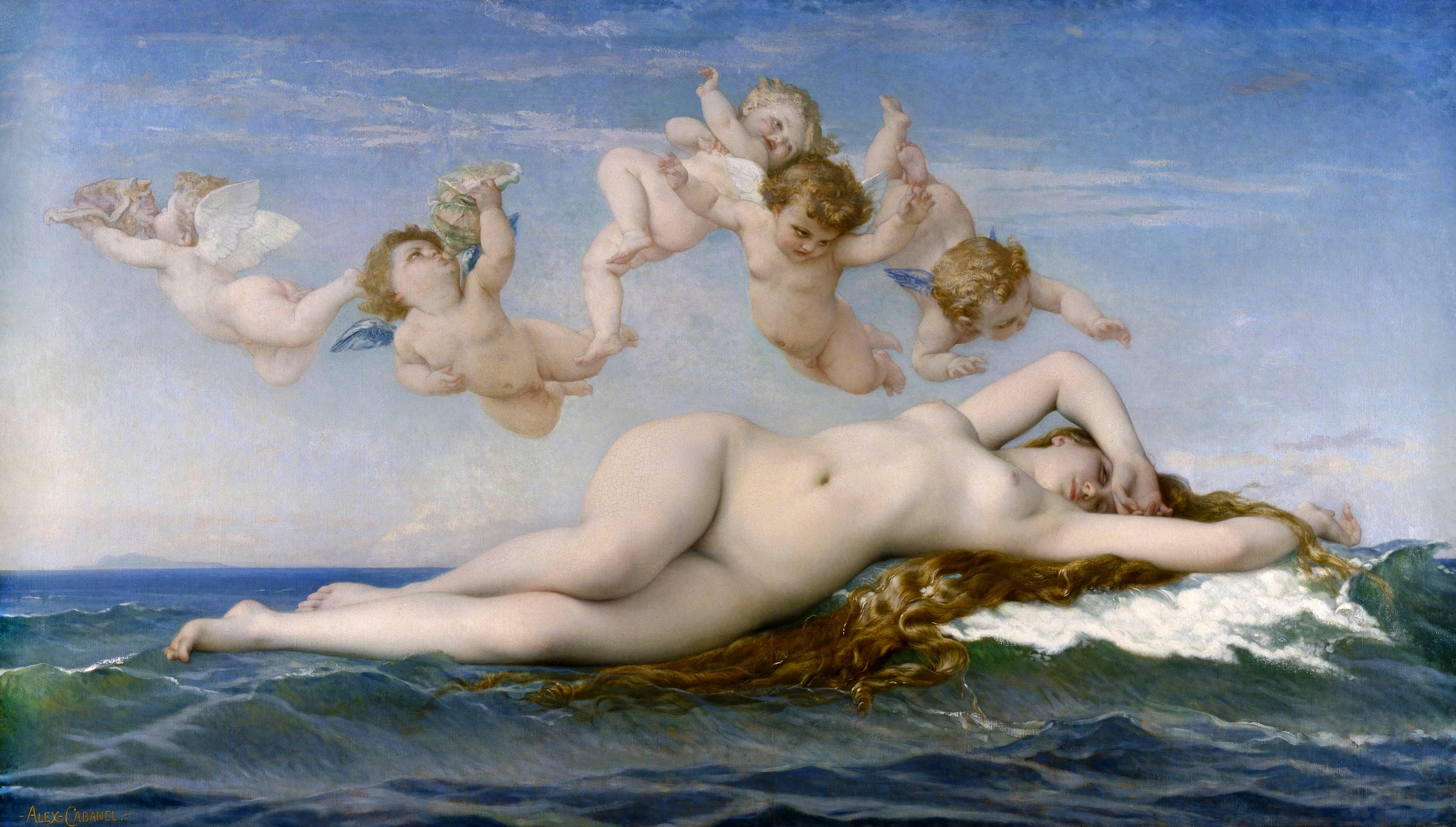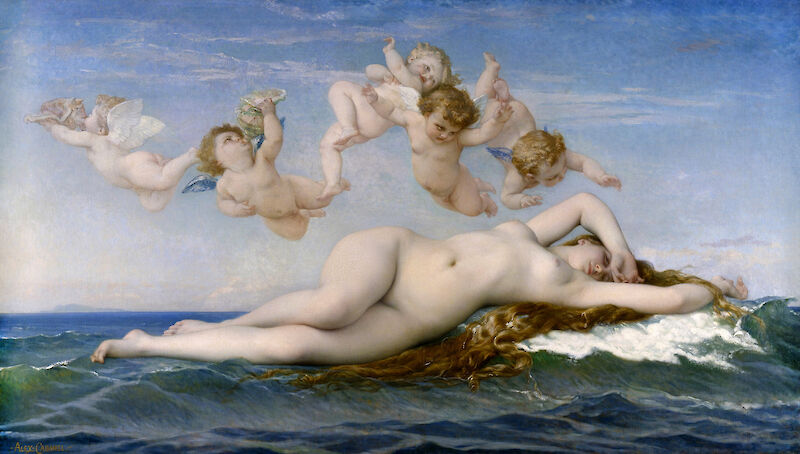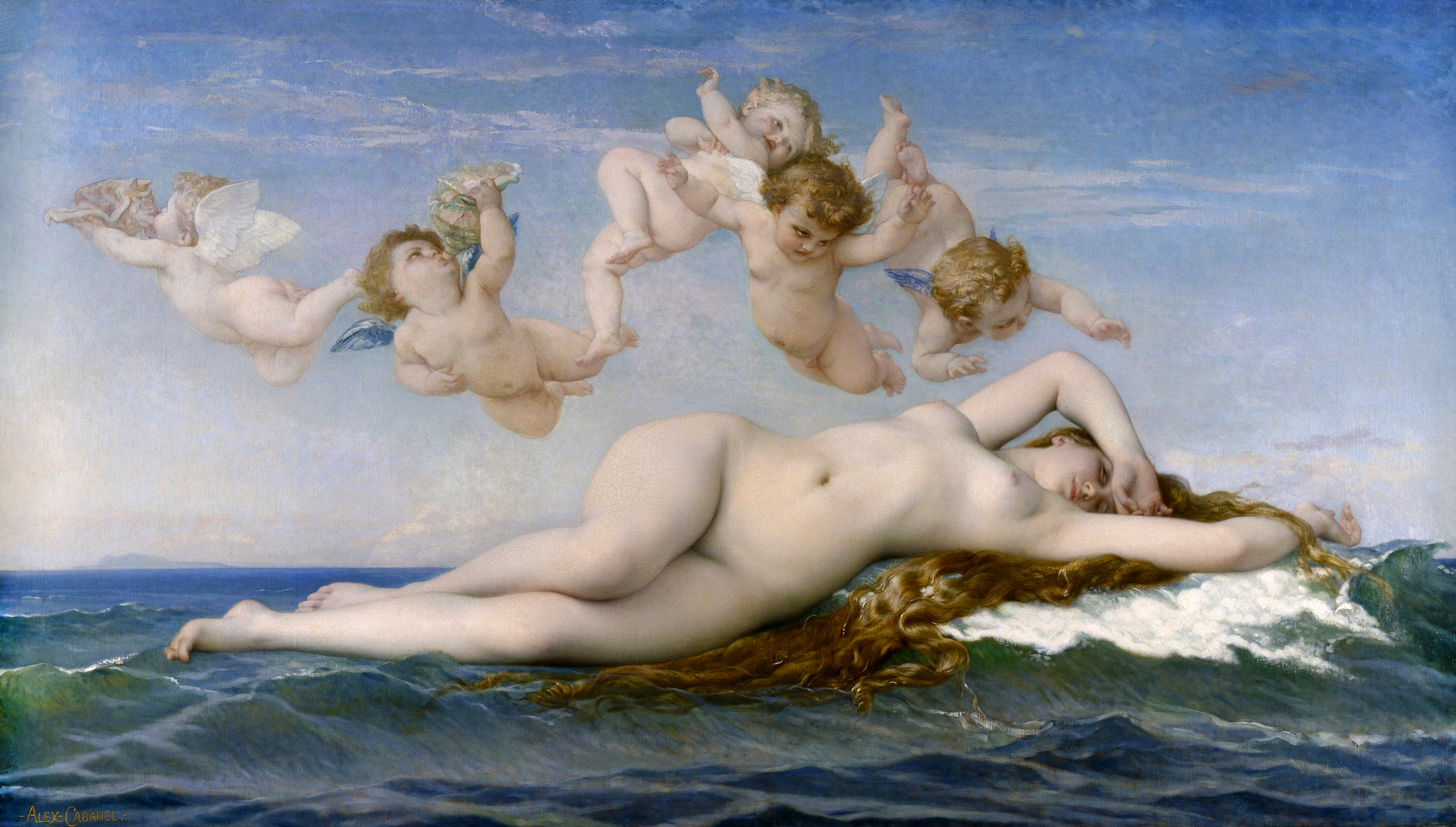


Very rarely, two artworks will enter the world at the same time and become inextricable twins, or in the case of Alexandre Cabanel’s Birth of Venus and Manet’s Luncheon on the Grass, opposite sides of the same coin. Let’s set the scene. While Abraham Lincoln was signing the Emancipation Proclamation and sparking the U.S. Civil War, a different kind of revolution was beginning in France—the overthrow of the Paris Salon.
The year was 1863, and for more than a century the official art exhibition of the Académie des Beaux-Arts had dominated the artistic landscape of the western world. Strict ranking of artistic themes, girded by rigid stylistic traditions, had defined and upheld the long-running style we now call Academicism. It is difficult to overstate the impact of the Salon. 50,000 people a day might visit the Salon and artists like Alexandre Cabanel and William-Adolphe Bouguereau, who played to the tastes of the critics, became wealthy and famous, with emperors and kings as their patrons. But 1863 was special, because it’s the year Western art evolved past the Academy.
Back to Venus. Cabanel was forty when he painted The Birth of Venus, a successful painter at the height of his influence. Cabanel had just been elected to serve as a member of the Institut de France, the group responsible for managing the Paris Salon. So Cabanel, already a long-running favorite of the Salon was now a juror as well. Naturally, his Birth of Venus was accepted and given pride of place. It is a gorgeous work of art. A classical theme interpreted with unparalleled grace and sensitivity, considered to be one of the finest examples of Academic art. And it’s surprisingly subtle! No clamshell, no grand landscape, just pearlescent female perfection and attendant cherubim washing into shore. The goddess looks sleepy, her arm raised in a gentle stretch, her back arching across the waves. She is both life-sized and monumental, reclining across the vastness of the sea. Cabanel knew his audience, perfectly cloaking erotic art in the sacred robes of history painting.
But what about that revolution? Ok, 1863 was Cabanel’s first year working for the Salon, and the juror’s were headed up by the conservative sculptor Émilien de Nieuwerkerke. There was always drama and speculation around acceptance and rejection but that year the standard was set by the near photo-realistic rendering of artworks like Cabanel’s Birth of Venus. Of the hundreds of artworks submitted nearly two-thirds were rejected—and the rejected artists were pissed. Because outside of the Academy, a new idea was rumbling through the art world: that naturalism, the accurate depiction of figures and forms, might be less important than realism, the depiction of real life over mythological beauty, people instead of gods, peasants instead of kings.
Enter Edouard Manet’s Luncheon on the Grass—the anti-Venus. Luncheon is an awkward painting, intentionally. The focal point is a nude woman, but she isn't surrounded by cherubs, she’s surrounded by fully clothed men. While the painting was originally titled Le Bain, The Bath, it’s obviously absurd that this woman is unclothed. Her male companions seem to ignore her and the whole strange scene is made more unnerving by its gigantic size—a scale reserved for the most dignified and important history paintings. And as if to further tempt the fury of the jurors, instead of the painstaking blending and chiaroscuro that smooths Cabanel’s Venus to a soft glow, Manet’s figures are rendered in raw brushstrokes under a flat, pallid light.
...
So here is our odd couple, Cabanel’s Venus and Manet’s Luncheon. The pinnacle of grand, idealized Academic art. A flawless Venus perfectly fit to the tastes of a privileged, educated elite and an awkward luncheon that strips the artifice from the nude body. It’s important to see these works together, because each without the other is only one half of the story. But how does the story end?
As soon as the salon was over, Napoleon III purchased Cabanel’s The Birth of Venus for his private collection. Manet’s Luncheon was rejected from Salon, and shown instead in the Salon des Refusés, Salon of the Rejected, where it sparked a furor of criticism and commentary, battle lines drawn between its genius or its pointless vulgarity. Of course, both artworks are remembered and beloved, though for different reasons. And that’s the beauty of these opposite sisters, who show us how art can flourish on two sides of the same coin.
...
Got questions, comments or corrections about The Birth of Venus? Join the conversation in our Discord, and if you enjoy content like this, consider becoming a member for exclusive essays, downloadables, and discounts in the Obelisk Store.
